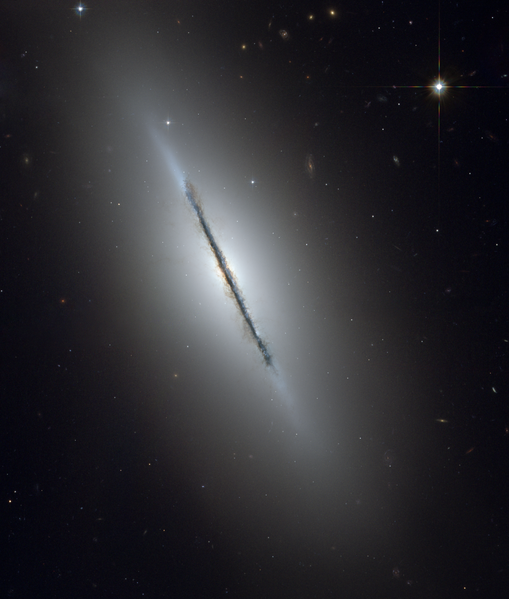Fichier:Ngc5866 hst big.png

Gréisst vun dëser Duerstellung: 509 × 599 Pixel. Aner Opléisungen: 204 × 240 Pixel | 408 × 480 Pixel | 652 × 768 Pixel | 870 × 1.024 Pixel | 1.739 × 2.048 Pixel | 3.190 × 3.756 Pixel.
Original Fichier (3.190 × 3.756 Pixel, Fichiersgréisst: 25,78 MB, MIME-Typ: image/png)
Versiounen
Klickt op e bestëmmten Zäitpunkt fir déi respektiv Versioun vum Fichier ze kucken.
| Versioun vum | Miniaturbild | Dimensiounen | Benotzer | Bemierkung | |
|---|---|---|---|---|---|
| aktuell | 18:38, 16. Feb. 2009 |  | 3.190 × 3.756 (25,78 MB) | Spencer | {{Information |Description={{en|1=From original NASA press release: :This is a unique view of the disk galaxy en:NGC 5866 tilted nearly edge-on to our line-of-sight. Hubble's sharp vision reveals a crisp dust lane dividing |
Benotze vu Fichieren
Dës Säit benotzt dëse Fichier:
Globaalt Benotze vum Fichier
Dës aner Wikie benotzen dëse Fichier:
- Benotzt op ab.wikipedia.org
- Benotzt op ace.wikipedia.org
- Benotzt op af.wikipedia.org
- Benotzt op af.wikibooks.org
- Benotzt op af.wikiquote.org
- Benotzt op af.wiktionary.org
- Benotzt op ak.wikipedia.org
- Benotzt op als.wikipedia.org
- Benotzt op am.wikipedia.org
- Benotzt op am.wiktionary.org
- Benotzt op ang.wikipedia.org
- Benotzt op ang.wiktionary.org
- Benotzt op an.wikipedia.org
- Benotzt op an.wiktionary.org
- Benotzt op arc.wikipedia.org
- Benotzt op ar.wikipedia.org
- Benotzt op ar.wikibooks.org
- Benotzt op ar.wikinews.org
- Benotzt op ar.wikiquote.org
- Benotzt op ar.wikisource.org
- Benotzt op ar.wikiversity.org
- Benotzt op ar.wiktionary.org
- Benotzt op arz.wikipedia.org
- Benotzt op ast.wikipedia.org
- Benotzt op ast.wiktionary.org
- Benotzt op as.wikipedia.org
- Benotzt op av.wikipedia.org
- Benotzt op ay.wikipedia.org
- Benotzt op ay.wiktionary.org
- Benotzt op az.wikipedia.org
- Benotzt op az.wikibooks.org
- Benotzt op az.wikiquote.org
- Benotzt op az.wikisource.org
- Benotzt op az.wiktionary.org
- Benotzt op bat-smg.wikipedia.org
- Benotzt op ba.wikipedia.org
- Benotzt op bcl.wikipedia.org
- Benotzt op be-tarask.wikipedia.org
- Benotzt op beta.wikiversity.org
- Benotzt op be.wikipedia.org
- Benotzt op be.wikibooks.org
Kuckt globale Gebrauch vun dësem Fichier.

